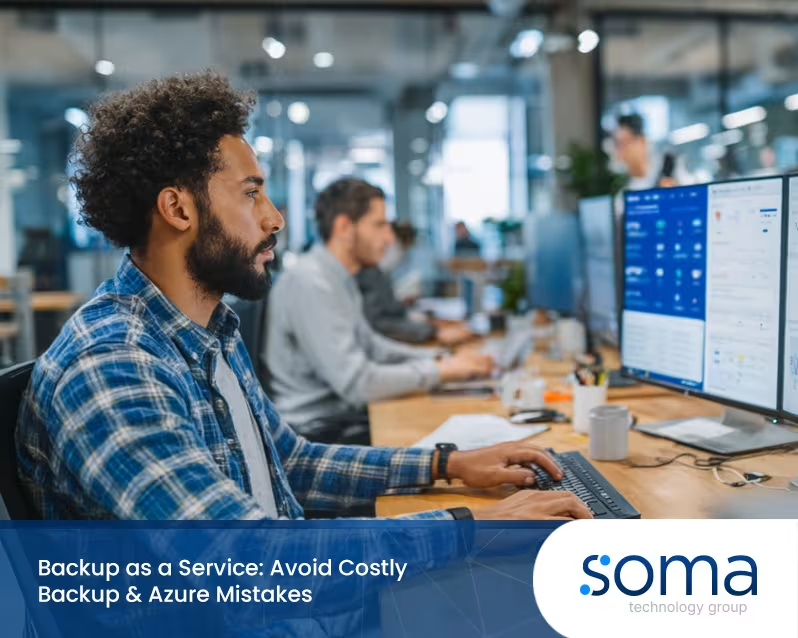
7 Key Steps to Creating a Cloud Migration Roadmap
When it comes to staying competitive, modern businesses face one common challenge: navigating their journey to the cloud. Whether it’s to improve efficiency, reduce costs, or enhance security, more companies are embarking on a cloud migration journey. But as exciting as this transformation sounds, the migration process can quickly become overwhelming without a clear plan.
Imagine shifting your entire IT infrastructure to the cloud and gaining flexibility and scalability, only to encounter downtime, data loss, or ballooning costs. These risks are precisely why having a cloud migration roadmap is critical. In this guide, we’ll walk through the 7 key steps to help you design a solid migration plan that ensures a smooth transition to the cloud while safeguarding your business operations.

What is cloud migration, and how does it work?
Cloud migration is the process of transferring your business’s digital operations from on-premises infrastructure to a cloud environment. This transition allows you to leverage the benefits of cloud computing, such as flexibility, scalability, and enhanced data security. But what does the process entail?
At its core, a cloud migration involves identifying which systems and applications to move, selecting the right cloud service or cloud platform, and developing a detailed migration plan. The goal is to ensure a seamless shift that minimises downtime, protects your data, and optimises performance.
Here’s a simple breakdown of how it works:
- Assess your current setup: Evaluate your existing IT systems to determine what should migrate to the cloud.
- Choose a cloud provider: Select a cloud provider that aligns with your business goals and budget. Whether you’re considering AWS, Google Cloud, or Azure, each offers unique features to fit various needs.
- Build a migration strategy: Define the best migration approach for your business, whether it’s a lift-and-shift, refactoring, or re-platforming.
- Prepare your systems: Ensure your applications and data are ready for migration. This includes testing compatibility and ensuring cloud readiness.
- Execute the migration: With the help of your migration team, carry out the transition in phases, starting with less critical systems to minimise risk.
- Optimise and maintain: Once the migration is complete, fine-tune your cloud environment to enhance efficiency and reduce costs.
Benefits of cloud migration for businesses
The decision to migrate to the cloud isn’t just about keeping up with tech trends—it’s about unlocking transformative benefits that can drive your business forward. Here are some of the most compelling advantages of embracing a cloud migration plan:
Cost savings
Managing on-premises systems comes with hefty costs, from maintaining hardware to handling unexpected repairs. By shifting to a cloud environment, you eliminate the need for expensive infrastructure and pay only for the resources you use, reducing your overall IT expenditure.
Enhanced flexibility and scalability
With the right cloud service, your business gains the ability to scale resources up or down based on demand. Whether you're experiencing seasonal spikes or planning for long-term growth, the cloud ensures you’re always prepared without overinvesting.
Improved security
Cyber threats are a growing concern for businesses of all sizes. A robust cloud platform provides built-in security measures such as encryption, firewalls, and regular updates to safeguard your data. Many cloud providers offer 24/7 monitoring to ensure your information is protected.
Business continuity and disaster recovery
Unexpected disruptions, such as power outages or natural disasters, can cripple a business. Cloud-based solutions offer reliable data backups and disaster recovery options, ensuring your operations can quickly resume even in the face of adversity.
Increased collaboration and productivity
By moving to the cloud, your team can access data and applications from anywhere, fostering seamless collaboration. This flexibility empowers remote work, streamlines communication, and enhances overall productivity.
Faster innovation
The cloud offers access to cutting-edge tools and technologies, such as artificial intelligence and machine learning, allowing your business to innovate faster. With these tools at your disposal, you can stay ahead of competitors and respond quickly to changing market demands.
Eco-friendly operations
Reducing your reliance on physical hardware means a lower carbon footprint. Many cloud providers prioritise energy-efficient data centres, contributing to more sustainable business practices.

7 steps to creating a cloud migration roadmap
A successful cloud migration roadmap is like a well-drawn map—it provides clear direction, helps you anticipate challenges, and ensures your business transitions smoothly. Here’s a step-by-step guide to build a cloud migration strategy that works:
1. Assess your current IT landscape
Before making any moves, conduct a thorough evaluation of your current infrastructure. Identify which applications, data, and systems are critical for business operations and determine their compatibility with a cloud platform. This step is crucial for understanding your cloud readiness and setting clear migration goals.
2. Define your cloud migration objectives
What do you hope to achieve with this transition? Whether it’s reducing costs, improving security, or enhancing scalability, your objectives will shape the entire migration plan and help you measure the success of your migration.
3. Choose the right cloud service provider
Selecting the right cloud provider is vital. Consider factors like pricing, security features, scalability, and customer support. Major cloud providers like AWS, Google Cloud, and Azure offer different strengths, so choose one that aligns with your business needs.
4. Develop a comprehensive migration strategy
Based on your evaluation, decide on the best migration approach for your business. Options include:
- Lift-and-shift: Moving applications to the cloud without modifications.
- Refactoring: Modifying applications to better suit the cloud environment.
- Re-platforming: Making minor adjustments to applications for cloud compatibility.
Your strategy should also include a detailed timeline and task assignments for your migration team.
5. Run a test migration
Before moving critical data, conduct a test run with non-essential systems. This allows you to identify and address potential issues, ensuring a smooth transition to the cloud when the full migration begins.
6. Execute your migration in phases
To reduce risk and minimise downtime, migrate your systems in phases. Start with less critical applications and gradually move to core business systems. This phased approach allows your team to adapt to the new cloud setup while maintaining business continuity.
7. Optimise and manage your cloud environment
Once the migration is complete, it’s time to optimise your cloud environment. Monitor performance, fine-tune resource allocation, and implement ongoing security measures. Regular reviews ensure you’re getting the most out of your cloud investment while keeping costs under control.
Tips for implementing the cloud migration roadmap
Even with a solid cloud migration roadmap, the implementation phase can present challenges. To ensure a smooth and successful transition, here are some practical tips for executing your migration plan:
Prioritise communication with your team
A well-informed team is a key component of a seamless migration process. Keep your employees in the loop about the changes, potential downtime, and new tools they’ll be using. Clear communication reduces confusion and fosters a smoother transition.
Leverage migration tools and automation
Take advantage of cloud migration tools to simplify and accelerate the migration process. Tools like AWS Migration Hub, Google Cloud Migrate, and Azure Migration simplify complex tasks, reduce manual effort, and help ensure accuracy.
Work with an experienced migration team
Having a skilled migration team or partnering with a reliable cloud service provider can significantly improve your outcomes. Their expertise in migration strategies ensures potential roadblocks are handled efficiently, keeping your business operations running smoothly.
Monitor and test throughout the migration
Don’t assume everything is working as expected—test your systems at every stage of the migration process. Regular testing ensures all data has been transferred correctly, applications run as intended, and your team can confidently use the new cloud environment.
Implement strong security measures
Security is a critical aspect of any cloud migration journey. Ensure your data is encrypted during the migration and that proper access controls are in place once the transition is complete. Security awareness training for your team can also help prevent breaches.
Plan for downtime and have a backup plan
Even the most carefully executed migration plan may involve some level of downtime. Prepare for this by scheduling the migration during low-traffic hours and having a backup plan in place to restore critical services quickly if needed.
Evaluate post-migration performance
After the migration is complete, take the time to evaluate your new cloud environment. Measure key performance indicators (KPIs), such as cost savings, system speed, and user satisfaction, to ensure your cloud migration is delivering the expected benefits.

Final thoughts
Embarking on a cloud migration journey can feel daunting, but with a well-structured cloud migration roadmap, the transition doesn’t have to disrupt your business. By carefully assessing your current setup, selecting the right cloud provider, and following a clear migration plan, you set the stage for a seamless shift that enhances your operations and reduces long-term costs.
Remember, the key to a successful cloud migration lies in preparation, ongoing optimisation, and collaboration with a skilled migration team. Whether you’re looking to improve flexibility, bolster security, or streamline your IT infrastructure, the cloud offers a world of opportunities.
If you’re ready to take the next step, consider partnering with a trusted provider like soma technology group. With years of experience and a commitment to helping businesses across Queensland, we specialise in creating tailored IT solutions that support your goals and ensure a smooth migration to the cloud.
Frequently asked questions
What does it mean to migrate to the cloud?
To migrate to the cloud means moving your business’s data, applications, and systems from on-premises servers to a secure, scalable cloud environment. This transition allows businesses to leverage advanced cloud architecture, reduce operational costs, and enhance efficiency. Whether you’re considering public cloud solutions or a hybrid approach, the process begins with evaluating your cloud readiness and selecting the right migration method for your business.
How do I create an effective cloud migration plan?
An effective cloud migration plan begins with assessing your current IT infrastructure and defining clear objectives for the transition. From there, you’ll need to choose the right cloud provider, such as AWS or Google Cloud, and develop a migration roadmap that outlines each step of the cloud journey. Key considerations include the cloud costs, necessary migration tools, and how to ensure a smooth transition to cloud operations.
What are the common cloud migration strategies?
There are several cloud migration strategies businesses can use:
- Rehosting (lift-and-shift): Moving systems to the cloud without changes.
- Replatforming: Making minor adjustments to optimise performance in the cloud.
- Refactoring: Redesigning applications to fully utilise cloud architecture.
- Hybrid migration: Combining on-premises and multiple cloud environments.
How can I ensure cloud readiness before migrating data to the cloud?
Ensuring cloud readiness involves a comprehensive evaluation of your IT infrastructure, applications, and business goals. Start by identifying which systems are suitable for application migration and assessing potential challenges, such as data compatibility and security. Your cloud migration team should run tests and simulations to confirm that your systems are ready for the move. This step reduces risks and ensures a smooth transition to cloud operations.
What role does the migration team play in the cloud journey?
A skilled cloud migration team is essential for a successful transition. They handle every aspect of the migration process, from creating a detailed cloud roadmap to running test migrations and addressing technical challenges. Their expertise ensures that you can execute the migration smoothly, protect your data, and optimise your cloud environment for long-term success.
How do I optimise cloud costs after migration?
Optimising cloud costs involves regularly reviewing resource usage, rightsizing your infrastructure, and leveraging cost-saving tools offered by cloud providers like AWS or Google Cloud. Ensure your cloud migration plan includes ongoing monitoring and adjustments to avoid overspending. Additionally, consolidating workloads and using cloud migration assistants for Jira can help streamline operations and reduce unnecessary expenses.
.svg)
%20(1).webp)


